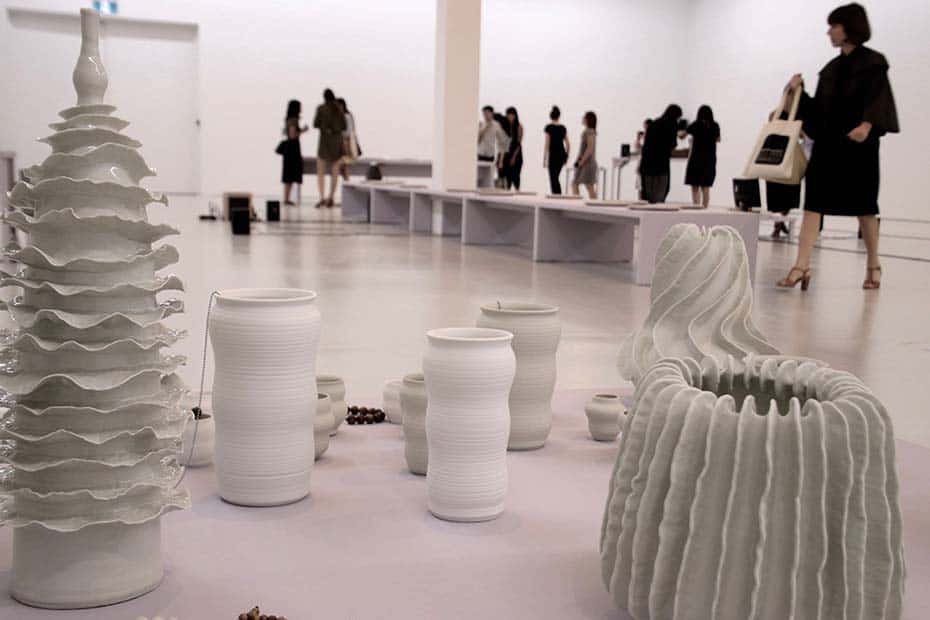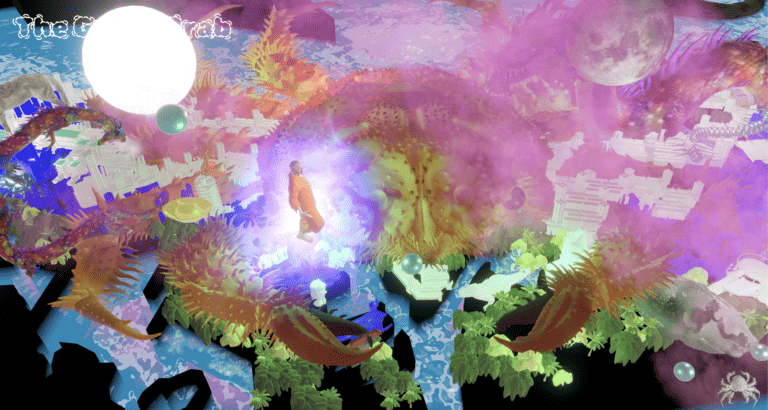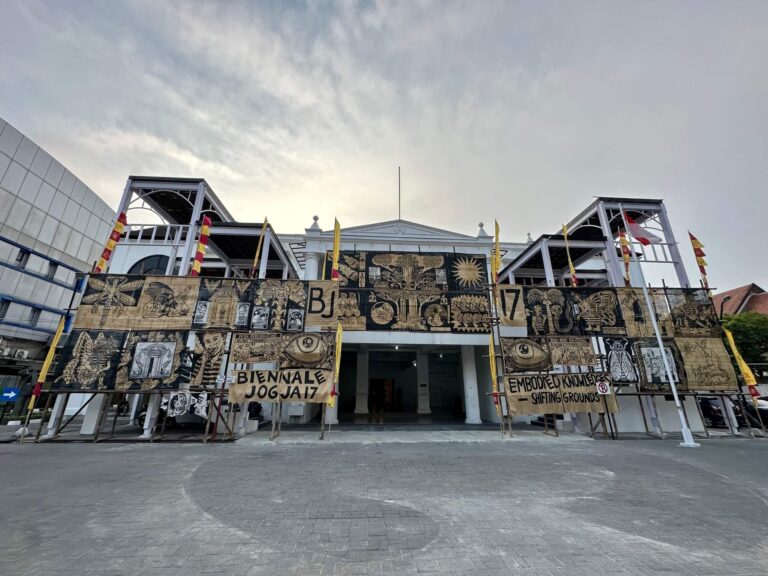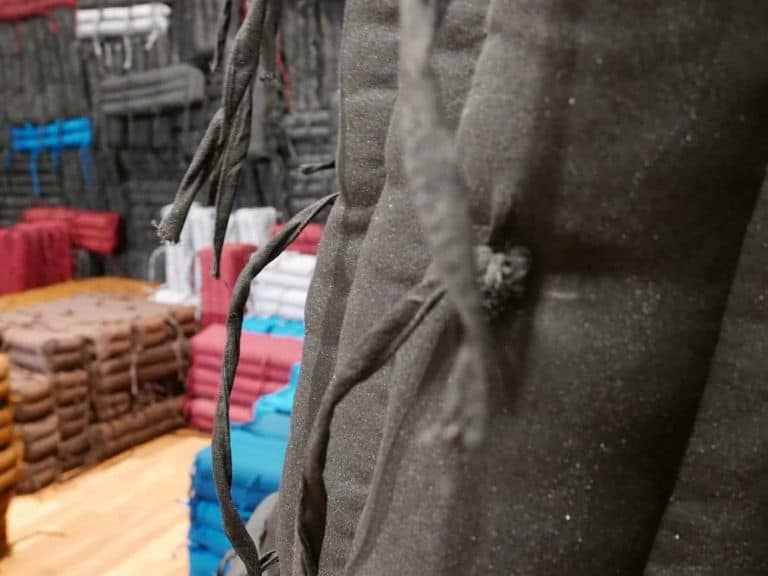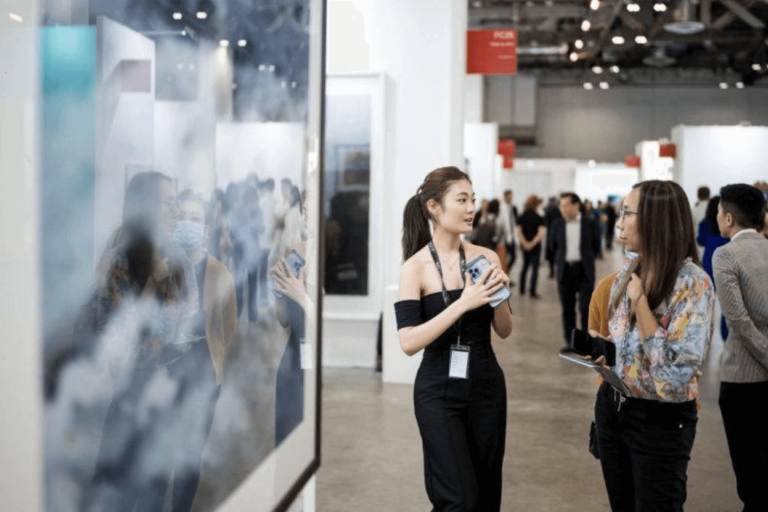Sound is the neglected child in the contemporary art pantheon that prioritises the visual. Even the tactile and the interactive get more attention. Sound art (meaning, at its very basic, art made of sound as its primary medium and whose subject matter is also sound) can be traced back to the inventions of futurist painter, composer and inventor Luigi Russolo, who built machines to reproduce the boom and noise of industry and warfare. Nowadays, digital technology has vastly changed the landscape of sound art; it may involve visual and auditory technical wizardry or none at all, be ever more interactive, more abstract, and more challenging of boundaries between music and musicality, music and noise.
At its purest, it calls to mind Susan Philipsz’ elegiac work – War Damaged Music Instruments – at Tate Britain in 2015, commissioned to commemorate the centennial of World War I, which I was privileged to experience for myself. In the empty vestibule of the Tate, there was nothing to feast one’s eyes on; all one heard was the piped music made by these broken instruments collected by Philipsz. The piped music formed the song The Last Post, usually played at military funerals. And yet, the fact that some of these instruments were so broken they could barely squeak out a sound makes it all the more heart-breaking.
By contrast, there is lots to see at Tarek Atoui’s first solo exhibition in Southeast Asia, entitled The Ground: From The Land To The Sea. On view at NTU CCA Singapore from 24 March to 24 June 2018, the exhibition consists of 11 titled works (some are variously comprised of different components). These are musical instruments fashioned by Atoui himself, as well as music gadgetry he created, such as a mixer, a sequencer and rhythm generator, a metronome, etc. Before we get too bogged down by what all these things are, what’s more important is the overarching question: what noise captured from our everyday environment can constitute ‘music’, once manipulated by a sound artist? Hold this thought in your mind as we locate entry points into this exhibition.
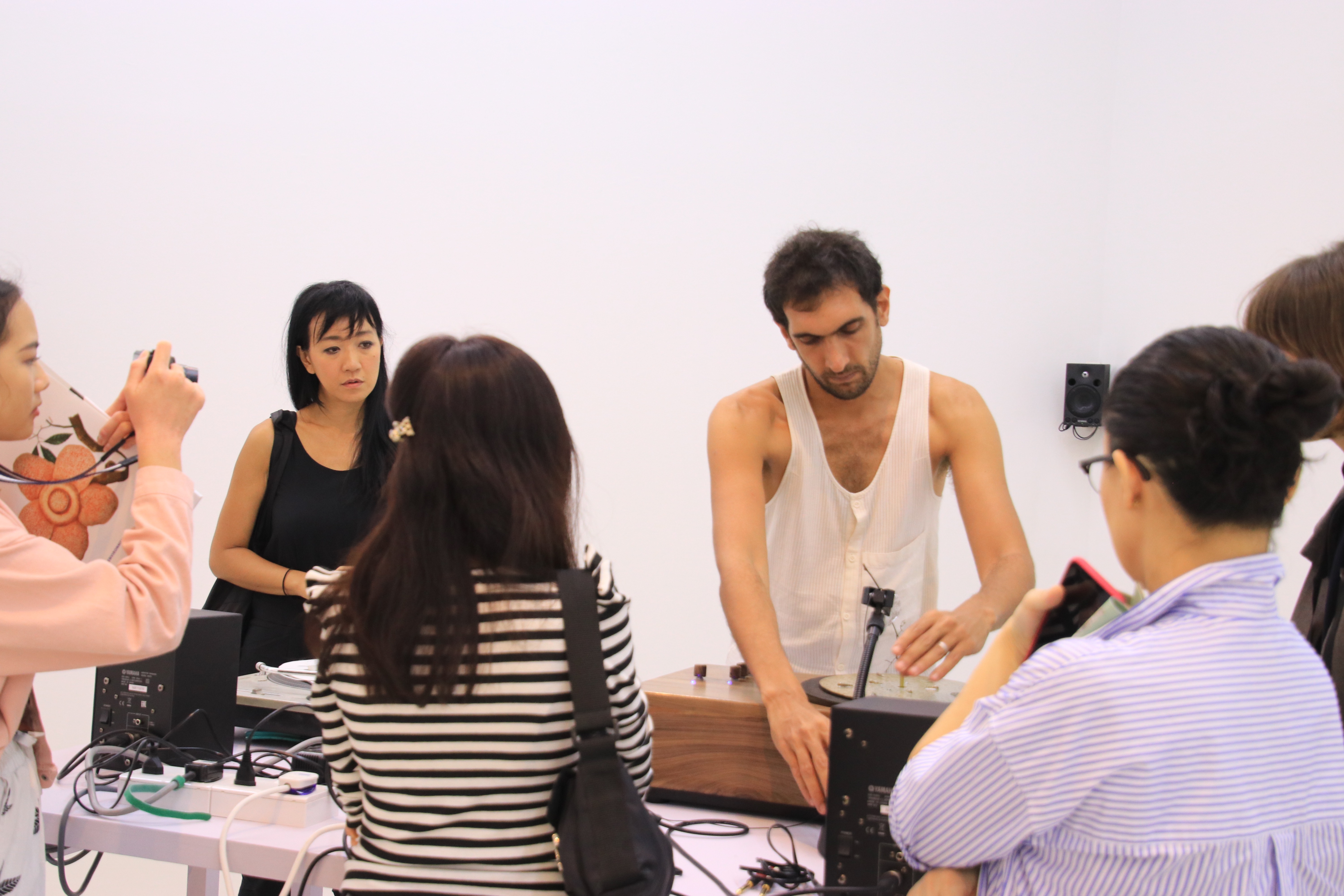
Let’s take a look at some of his creative and surprising instruments in this exhibition.
The Spin Library, at first glance, resembles a series of mostly-round ceramic plates, something you might want to mount decoratively on a wall.
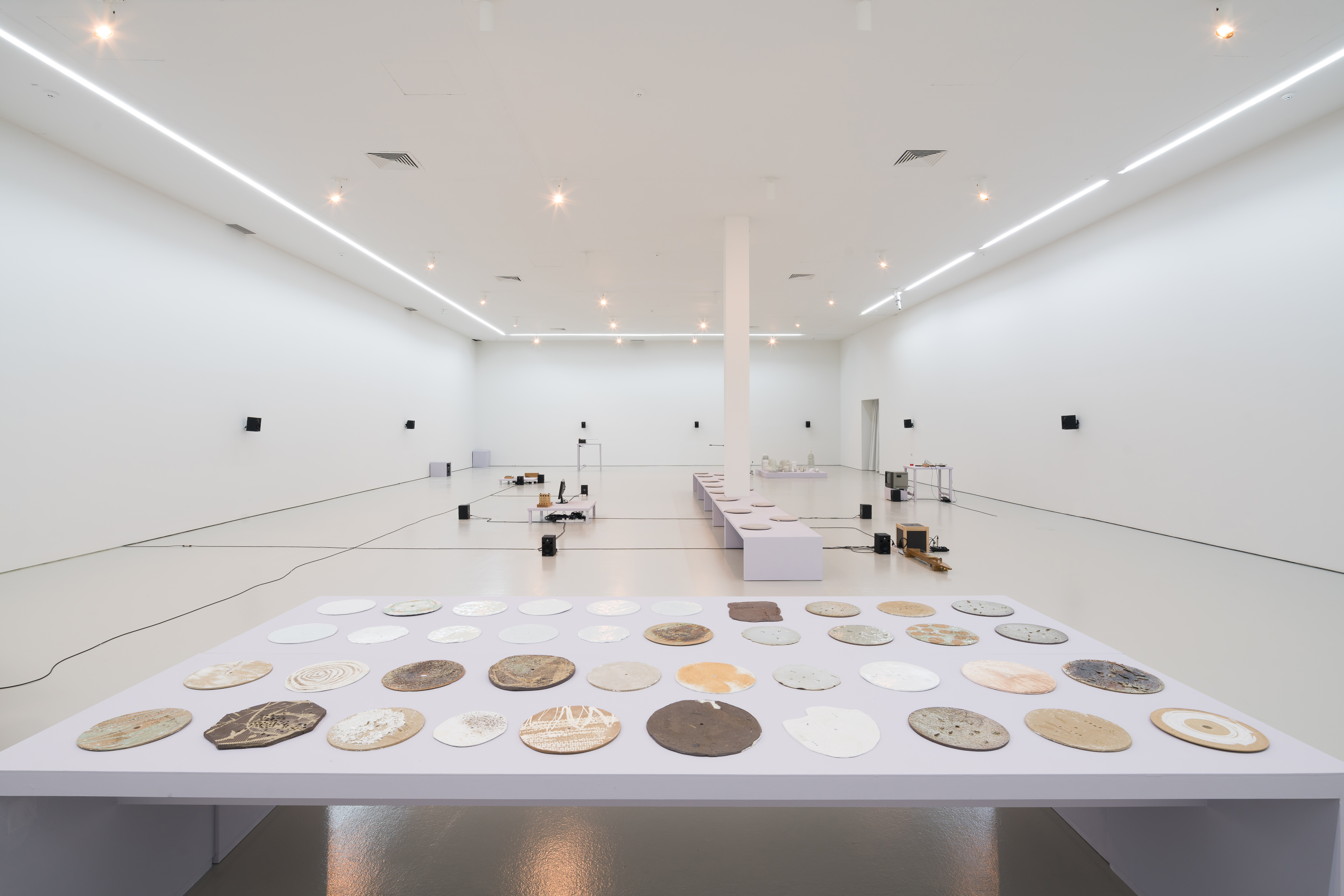
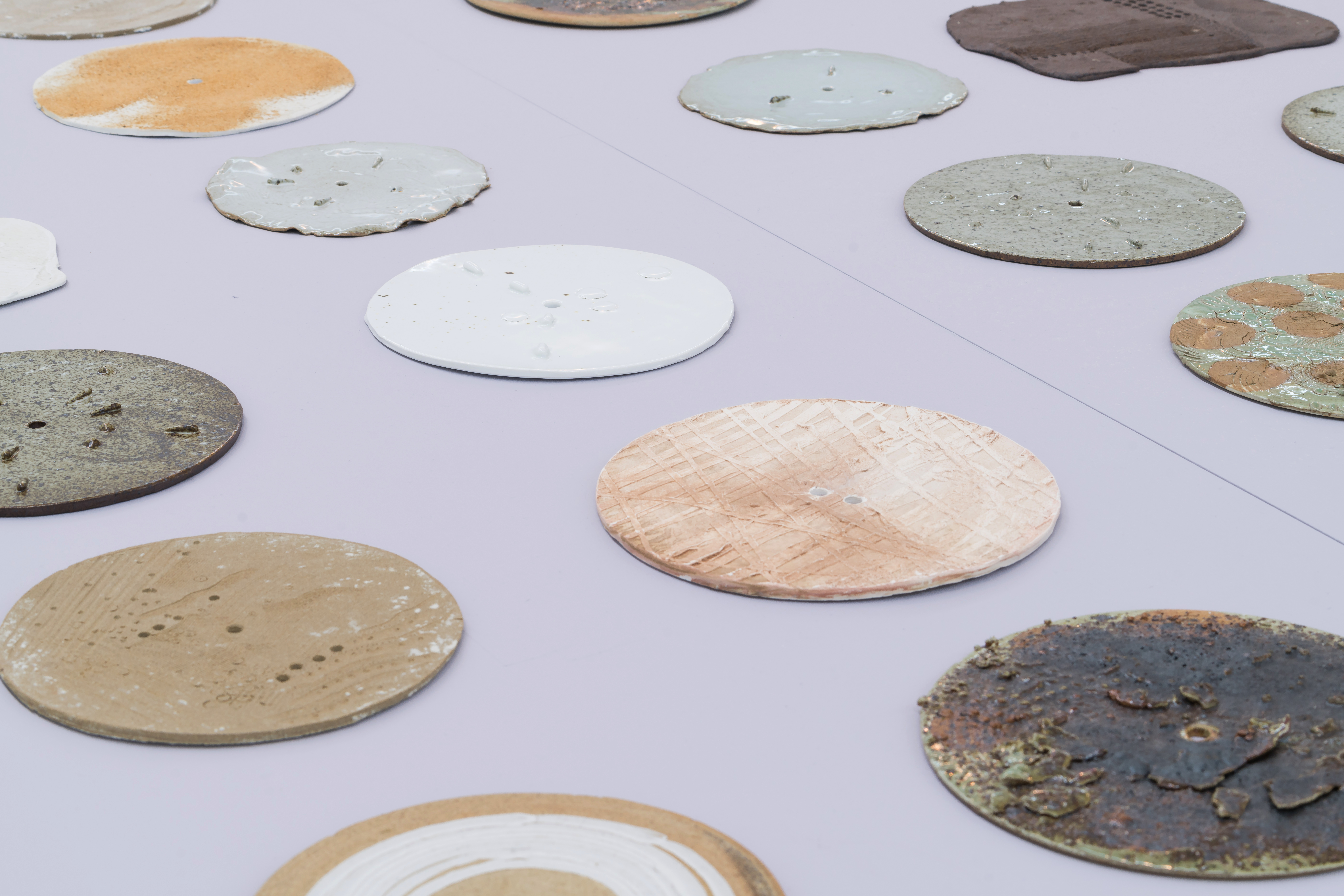
In actual fact, these are turntable records, and Atoui demonstrated at the exhibition opening how, by engraving onto the surface of each record a series of tiny bumps and jounces, he transcribes onto the record the rhythm of Arabic beats. When played and amplified, the sounds of Arabic drumming filled the exhibition space.
Atoui, together with his collaborator Wu Lou, also made the special turntable, which is designed to read the discs from The Spin Library and powers a second acoustic turntable through its electronic signals. Both turn at irregular speeds but are synchronised, producing a mimesis of Arabic rhythmic beats.
Atoui has also furnished turntable needles, made out of tree-twigs, wooden sticks, feathers, what looks like the tusk of some animal. Just your average salvage-heap scrounge then.
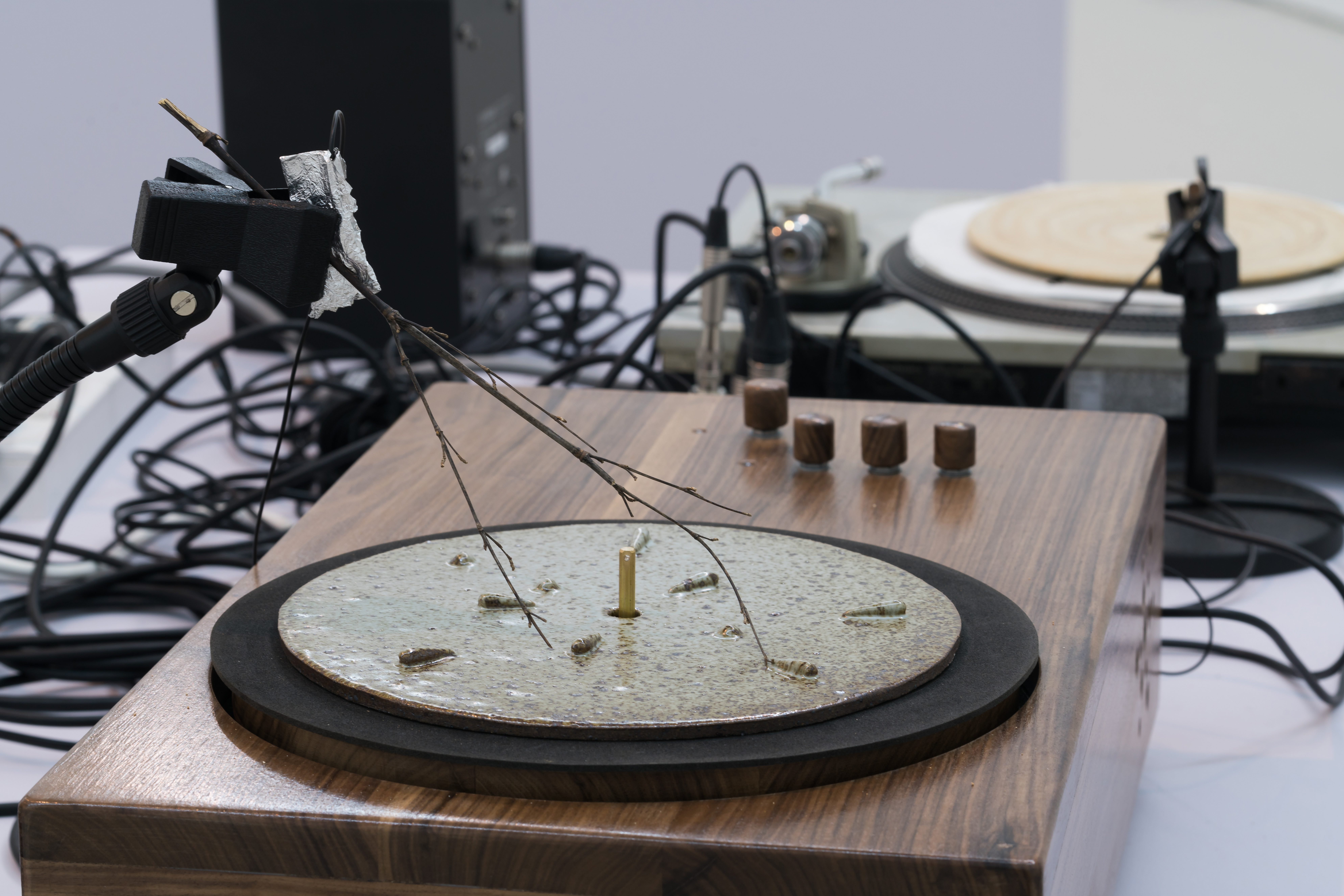
Atoui’s The Spin showcases a set of 17 little pots and 5 big towers (two of which look almost pagoda-like), made, cooked and glazed with different materials and techniques inspired by the pottery and ceramic making technique in Jingdezhen and Guangzhou, China. Each of these components spins or rotates, and the musician can use a flotilla of available ‘players’ such as marbles, thimbles, a metallic chain, to beat out a rhythm against the rotation of these objects. It’s practically a ‘sound’ sandbox, and the sounds call to mind the tinkling of a xylophone.
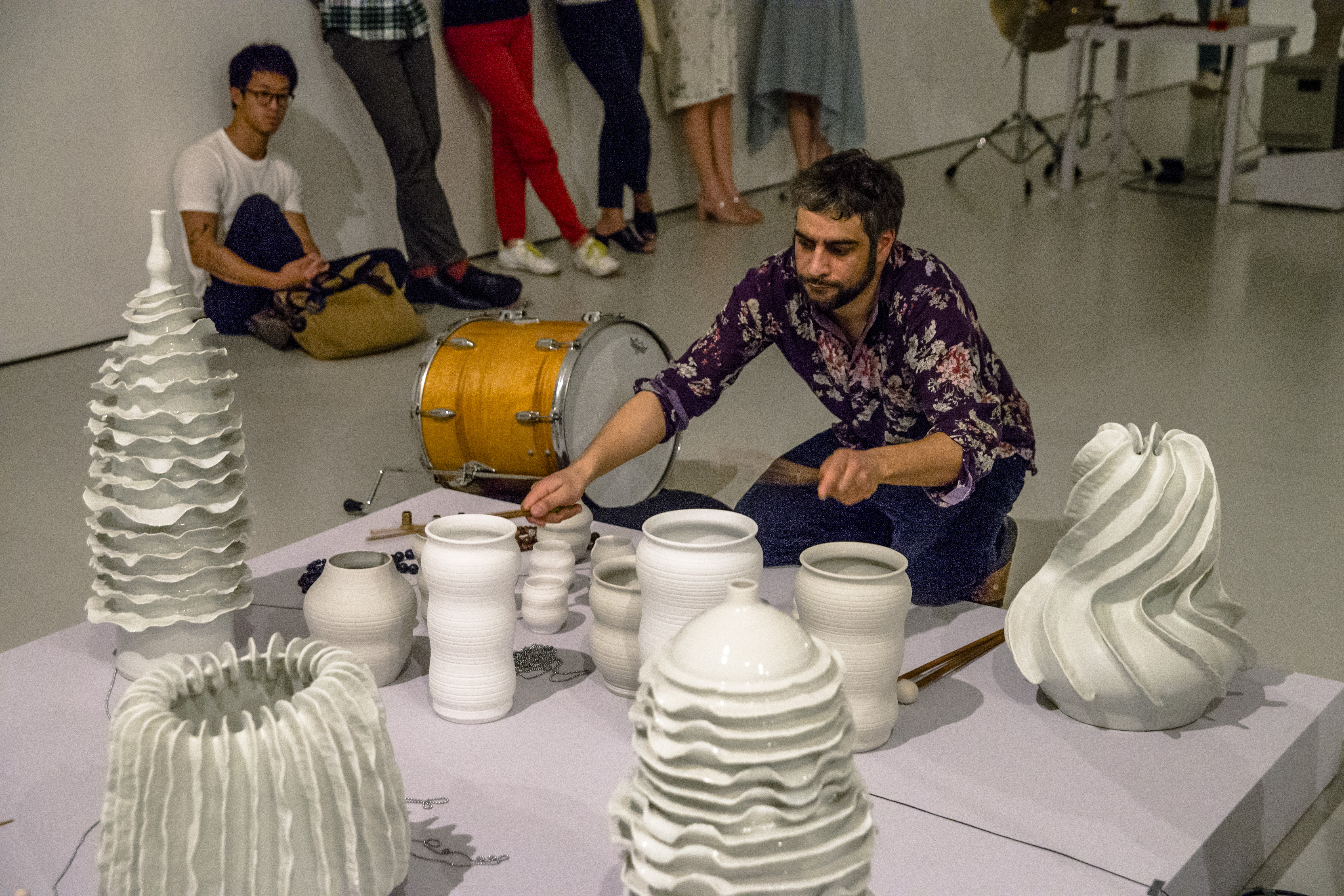
Most of the instruments created by Atoui are done as a collaborative effort, none more so than The Trichord, which was first created for the Sharjah Biennale 11 with the help of acoustic instrument makers, speaker designers, software engineers as well as deaf and hearing-impaired people. For his NTU CCA show, which also marks his first solo exhibition in Southeast Asia, the collaborative spirit so intrinsic to his practice extends to the performance aspect to include a cast of craftsmen, local and international sound artists, and composers.
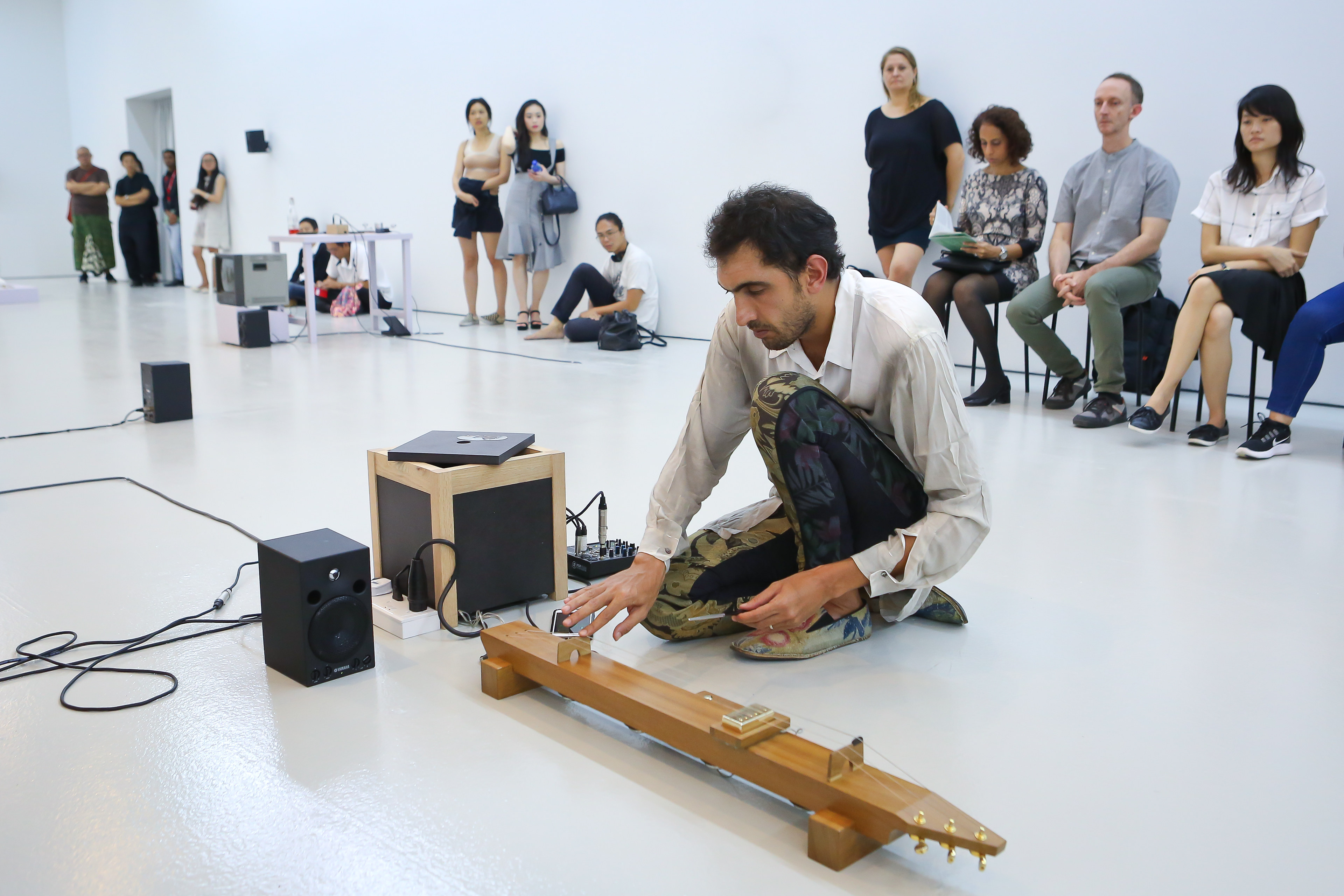
Over-layering the exhibition are 12 speakers playing the sounds of underwater environments, human and industrial activities at ports and harbours such as Athens and Abu Dhabi, which Atoui collected and recorded originally for his project I/E (2015-ongoing).
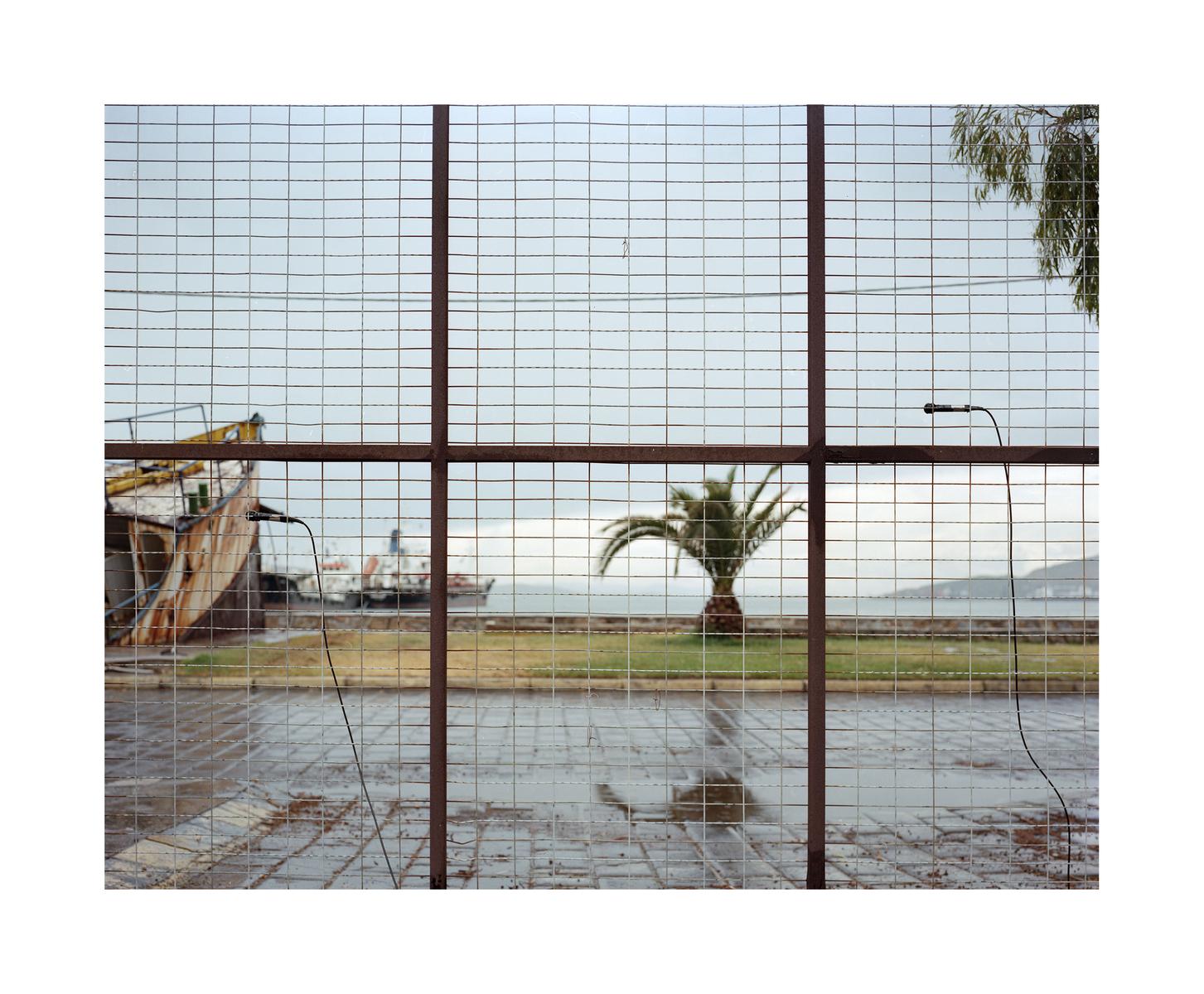
For The Ground: From the Land to the Sea, , together with composer and sound artist Éric La Casa, Atoui added to his sonic library by recording the sounds of Singapore from waterfront sites and islands including the Jurong Fishery Port, Pulau Sebarok (an oil storage facility and refueling port), an oil tanker and along the Singapore coast. The process of capturing these sounds is interesting: using various recording devices, including contact microphones or hydrophones, and even self-made omnidirectional microphones, the duo captured the audible as well as the inaudible. Here, sound art can be a misnomer: one does not just capture ‘sound’, one attempts to capture that which has ‘acoustic features’ or capability, such as vibrations, inaudible audio waves etc.
These sounds of our everyday environment correspond to the geographic title of this exhibition, but through the artistry of Atoui, they have been abstracted and transformed. Thus, the capture of these sounds and their transmogrification into an instrument, record or other musical device become an interpretive gesture. How so? Most of the instruments in this exhibition formed an earlier exhibition called The Ground (2013-ongoing), for which Atoui spent five years in an investigation and observation of farming and agricultural activities in the Pearl River Delta in China. He produced sketches from his observations, e.g. the cycles of soil, which was then transposed into ‘pulses’ and ‘rhythms’. Likewise, strolling through the various soundscapes of this exhibition, the port and harbour sounds form an ambient soundscape that bleeds the line between music and noise; it challenges our definitions – what’s noise? what’s music? For Atoui, it’s just as important where this sound he has captured is being replayed – in a concert space or an exhibition hall. That is, the spatial determines the acoustics.
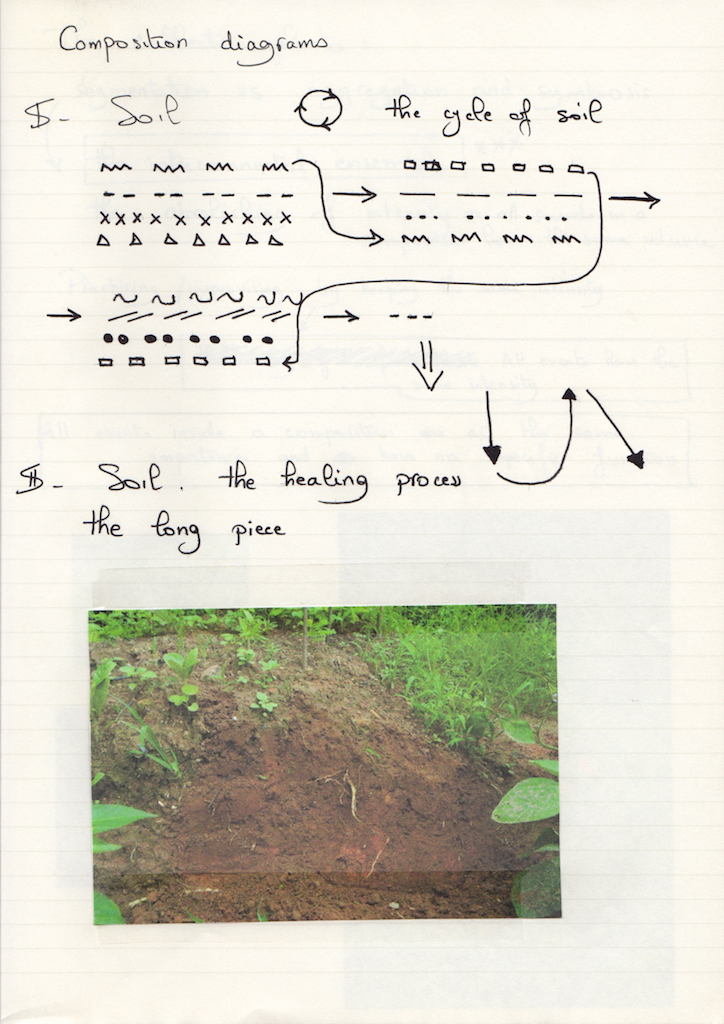
For me, thinking about how these particular sound waves have had to travel over specific geologic formations (rock, soil, bricks, gorges, mangroves, sea, ports) before being recorded, I begin to understand that the term ‘aurality’ – how we comprehend sound– is inexplicably intertwined with the spatial. Sound waves are moulded by geographical formations, even the blocks of air, they traverse. One of the realizations Atoui probably wants to impart is this notion of an ‘acoustic ecology’, one influenced by the cycles of nature and the inaudible topography of different environments.
But here’s the rub: strolling through the visual display of such unique-looking instruments in white-cube space begs one to touch and more importantly, to hear these instruments (after all, this is sound art). But the instruments are not only delicate, one-of-a-kind, they are also too complex for the uninitiated to play with (and other than a row of seats to experience a sonic encounter, it’s otherwise a no-touch zone anyway).
Thus, one way to understand or approach sound art is to consider it as a multi-part exhibition, of which the performance of the instruments is the most essential and critical. I had the opportunity to hear the performance of Uriel Barthélémi, an electroacoustic musician and sound artist with conservatory training who had previously collaborated with Tarek. Uriel started off with establishing a bass sound, layering on various instruments at different junctures and deploying some of the unique ‘player’s provided. He also brought his own drum set! The sounds ranged from the high-pitched to the percussive, and yet, overall, there was form and structure.
Watching him criss-cross the exhibition space, bringing the audience with him to various stations, was like watching a one-man orchestra. Although the performance was highly improvised, Uriel explained that he prepared days beforehand by experimenting with these instruments he was actually encountering for the first time, deciding on a ‘colour’ for his performance – e.g. something ‘dark.’
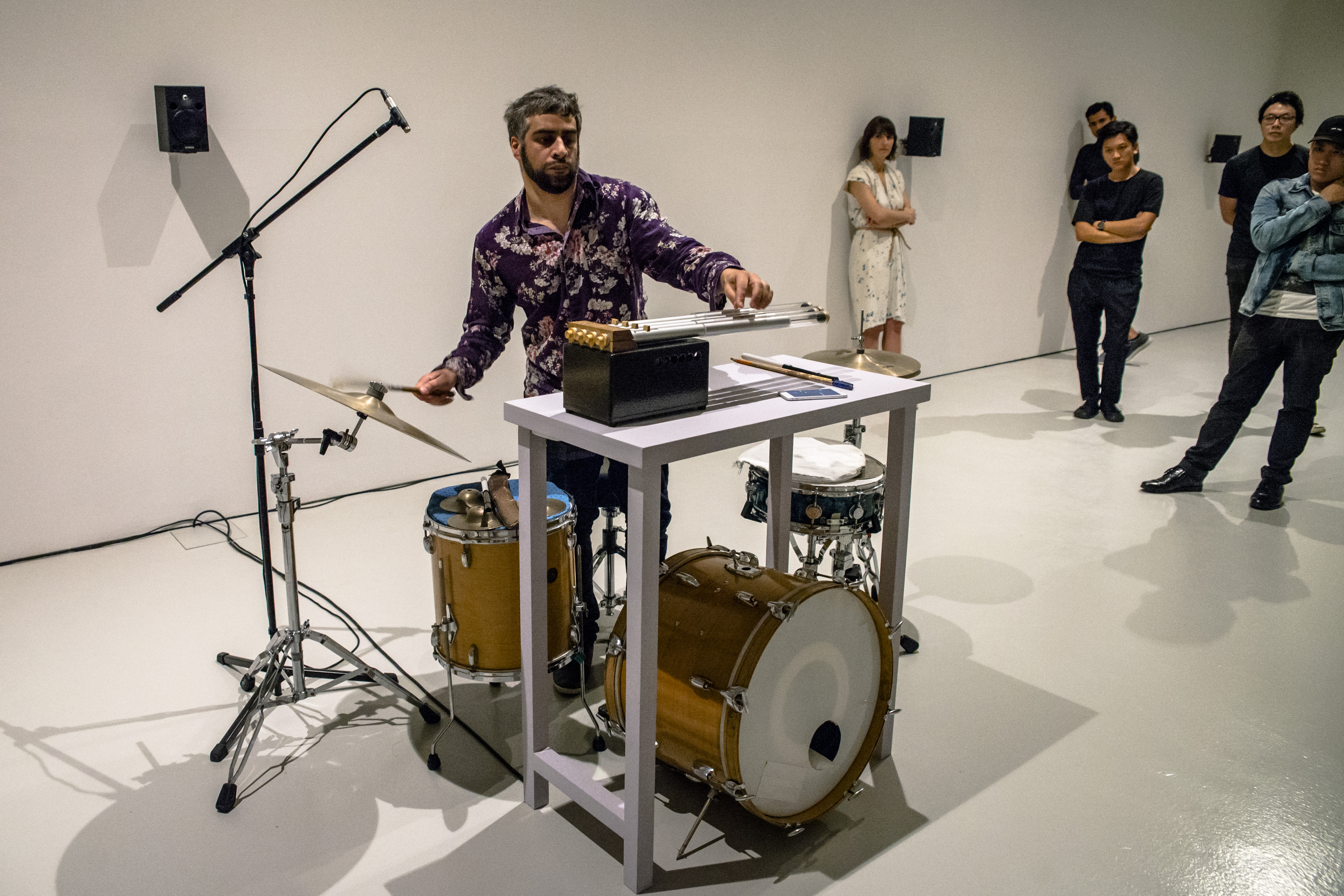
Whilst I employed the metaphor of an ‘orchestra’ here, what strikes home though is the improvisational nature of an acousmatic composition – no one performance is like any other; it’s created as it happens on site. Our approach to listening, thereby, also undergoes a transformation – edging towards an attitude of what sound designer Andy Farnell terms ‘reduced listening’, where we are “listening not to source or cause but to the sound itself – its energy and flow.” The sounds I heard during Uriel’s performance sometimes called up strains of an Arabic beat, other times a haunting line of flute, but just as often, were reduced to breaths, scrapes, feedbacks, industrial burrs, twangs, whirs, tinkles, taps, ebbs and flows. Whether you want to call it noise or sound begins to feel semantical because there was no doubt in my mind I heard ‘music’.
